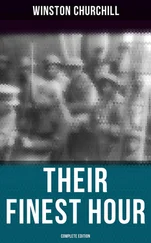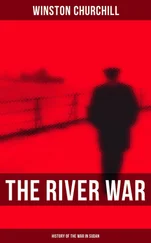Winston Churchill - Ian Hamilton's March
Здесь есть возможность читать онлайн «Winston Churchill - Ian Hamilton's March» весь текст электронной книги совершенно бесплатно (целиком полную версию без сокращений). В некоторых случаях можно слушать аудио, скачать через торрент в формате fb2 и присутствует краткое содержание. Год выпуска: 2018, Издательство: epubBooks Classics, Жанр: История, Прочая документальная литература, на английском языке. Описание произведения, (предисловие) а так же отзывы посетителей доступны на портале библиотеки ЛибКат.
- Название:Ian Hamilton's March
- Автор:
- Издательство:epubBooks Classics
- Жанр:
- Год:2018
- ISBN:нет данных
- Рейтинг книги:4 / 5. Голосов: 1
-
Избранное:Добавить в избранное
- Отзывы:
-
Ваша оценка:
- 80
- 1
- 2
- 3
- 4
- 5
Ian Hamilton's March: краткое содержание, описание и аннотация
Предлагаем к чтению аннотацию, описание, краткое содержание или предисловие (зависит от того, что написал сам автор книги «Ian Hamilton's March»). Если вы не нашли необходимую информацию о книге — напишите в комментариях, мы постараемся отыскать её.
London to Ladysmith
Ian Hamilton's March — читать онлайн бесплатно полную книгу (весь текст) целиком
Ниже представлен текст книги, разбитый по страницам. Система сохранения места последней прочитанной страницы, позволяет с удобством читать онлайн бесплатно книгу «Ian Hamilton's March», без необходимости каждый раз заново искать на чём Вы остановились. Поставьте закладку, и сможете в любой момент перейти на страницу, на которой закончили чтение.
Интервал:
Закладка:
The Boers made good their retreat. They took with them twenty–five prisoners of the Worcester Regiment, who had blundered into their camp before Dewetsdorp, armed only with cooking pots, which they meant to carry to their regiment on 'Brab's kopje,' and great quantities of sheep and oxen. They halted in Ladybrand, and to the north and east of Thabanchu in a most pugnacious mood. Indeed, they had no reason to be discontented with the result of their southern incursion.
They had captured seven guns and nearly 1,000 prisoners. They had arrested and carried off a good many farmers who had laid down their arms and made their peace with the British Government. They had harried all who received the troops kindly, had collected large quantities of supplies which they had sent north, and, lastly, had delayed the main advance by more than five weeks.
Owing to the great disproportion of the forces the fighting had not been of a severe nature, and the losses were small. In the skirmishes before Dewetsdorp about forty men were killed and wounded, mostly in Brabazon's Brigade. In the action at Leeukop and the subsequent fighting which attended French's march several officers and fifty men were stricken, and a squadron of the 9th Lancers, which was required to attack a kopje, suffered severely, having nearly twenty casualties, including Captain Stanley, a very brave officer, who died of his wounds, and Victor Brooke (of whom more will be heard in the future) who had his left hand smashed. Captain Brasier–Creagh, 9th Bengal Lancers, commanding Roberts's Horse, was killed at Leeukop, and his many friends along the Indian frontier will not need to be told that by his death Lord Roberts's Army suffered a loss appreciable even among the great forces now in the field.
Chapter VII
Ian Hamilton's March
Winburg: May 8.
The unsatisfactory course of the operations in the south–eastern corner of the Free State, and the indecisive results to which they led, were soon to be arrested and reversed by a series of movements of surprising vigour and remarkable success. Of all the demonstrations which had been intended against the enemy to the east of the railway, Hamilton's advance towards the waterworks position, being the most northerly, was to have been the least earnestly pressed. The orders were: 'If you find the waterworks weakly held, which is not likely, you may try to occupy them, and, in the event of success, may call up Smith–Dorrien's Brigade to strengthen you.'
On this General Ian Hamilton, who now commanded the imposing, but somewhat scattered, Mounted Infantry Division, started from Bloemfontein on the 22nd of April with about 2,000 Light Horse, Australians, and Mounted Infantry, and one battery of Horse Artillery. On the 23rd he arrived before the waterworks, reconnoitred them, found them weakly held, or, at any rate, thought he could take them, attacked, and before dark made himself master of the waterworks themselves, and of the drift over the river which led to the hills beyond, into which the enemy had retired. Smith–Dorrien's Brigade was called up at once, arrived after dark, and the next morning the force crossed at the drift, and the whole position was occupied. The enemy offered a slight resistance, which was attributed by some to a deep design on their part to lure the column into a trap further to the east, and by others to the manner in which the attack was delivered. The news o the capture of this strong and important place, which secures the Bloemfontein water supply, was received with great satisfaction at headquarters.
Meanwhile the operations round Dewetsdorp came to their abortive conclusion, and it became evident that the Boers had evaded the intercepting columns and were making their way northwards by Thabanchu. What was to be done? Had the officer commanding at the waterworks any suggestion to make? Most certainly, and the suggestion was that he should be permitted to advance himself and occupy Thabanchu. This was the answer that was expected and desired. Permission, and with it a field battery, was accordingly given, and, on the 25th of April, the column moved out of the waterworks position towards Thabanchu. It consisted of Ridley's Brigade of Mounted Infantry, which included a large proportion of colonials—Australians and New Zealanders—Smith–Dorrien's Infantry Brigade (Gordons, Canadians, Shropshires, and Cornwalls), with twelve guns.
The country to the east of Bloemfontein is at first smooth and open. Great plains of brownish grass stretch almost to the horizon, broken to the eye only by occasional scrub–covered hills. To any one unaccustomed to the South African veldt they appear to offer no obstacle to the free movement of cavalry or artillery; nor is it until one tries to ride in a straight line across them that the treacherous and unimagined donga and the awkward wire fence interpose themselves. But beyond the Modder River, on which the waterworks are situated, the surface of the ground becomes rocky and hilly, and the features increase in prominence until Thabanchu Mountain is reached, and thereafter the country uprears itself in a succession of ridges to the rugged and lofty peaks of Basutoland.
Thabanchu, a small village, as we should regard it in England, a town of comparative commercial importance in the Orange Free State, and of undoubted strategic value during this phase of the operations, stands at the foot of the precipitous feature that bears its name. It is approached from the direction of Bloemfontein by a long, broad, flat–bottomed valley, whose walls on either side rise higher and higher by degrees as the road runs eastward. The eastern end of this wide passage is closed by a chain of rocky kopjes, whose situation is so curious and striking that they seem to be devised by nature to resist the advance of an invader. The kopjes, rising abruptly from the flat glacis–like ground, are a strong rampart, and the whole position, resting on apparently secure flanks, creates a most formidable barrier, which is called locally Israel's Poorte.
Along the valley, on the 25th of April, Hamilton proceeded to march with his entire force, Ridley and the Mounted Infantry being a considerable distance in front of the main body. At ten o'clock a heavy fire of musketry and artillery was opened at an extreme range from the hills on the left hand side of the column. Ignoring this, which proved afterwards to be only a Boer demonstration, Ridley continued his march, and Hamilton followed, until, at a little after eleven o'clock, both were brought to a stand–still before the Israel's Poorte position, which was found to be occupied by the enemy, estimated at 800 strong, with several guns.
After a personal reconnaissance, and in spite of a most disquieting report that the Boers had just been reinforced by 'two thousand men in four lines,' the General resolved to attack. His plan was simple but effective. It resembled very closely Sir Bindon Blood's forcing of the 'Gate of Swat' at Landakai in 1897. The front was to be masked and contained by a sufficient force of infantry and all the guns. The rest of the troops were to stretch out to the left and swing to the right, the infantry along the left hand wall of the valley, the mounted men actually the other side of the wall.
Accordingly, the Canadian Regiment and the Grahamstown Volunteers (Marshall's Horse) moved forward in extended order—25 yards interval between men—to within about 800 yards of the enemy's position, and here, just out of the range of serious harm, they lay down and opened a continuous musketry fire. Both batteries came into action forthwith and shelled the crest line with satisfactory energy. Smith–Dorrien, with the remaining three battalions of his brigade, moved to the left, and began working along the ridges. Ridley, breaking out of the valley into the more open ground beyond, began to move against the enemy's line of retreat.
Читать дальшеИнтервал:
Закладка:
Похожие книги на «Ian Hamilton's March»
Представляем Вашему вниманию похожие книги на «Ian Hamilton's March» списком для выбора. Мы отобрали схожую по названию и смыслу литературу в надежде предоставить читателям больше вариантов отыскать новые, интересные, ещё непрочитанные произведения.
Обсуждение, отзывы о книге «Ian Hamilton's March» и просто собственные мнения читателей. Оставьте ваши комментарии, напишите, что Вы думаете о произведении, его смысле или главных героях. Укажите что конкретно понравилось, а что нет, и почему Вы так считаете.











